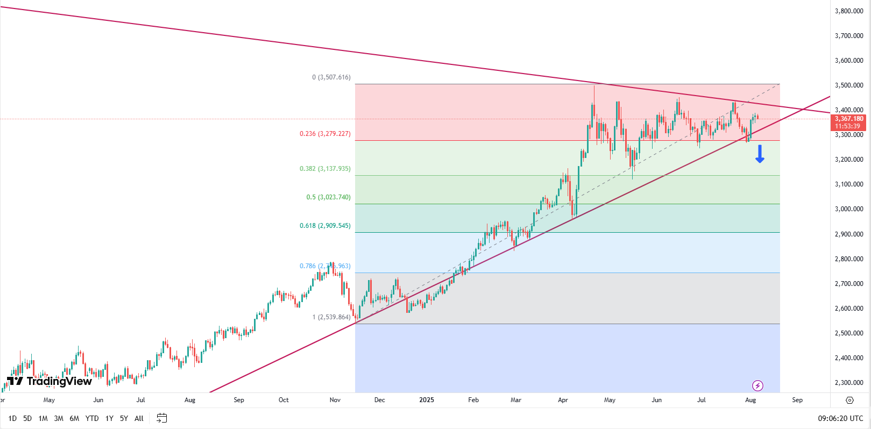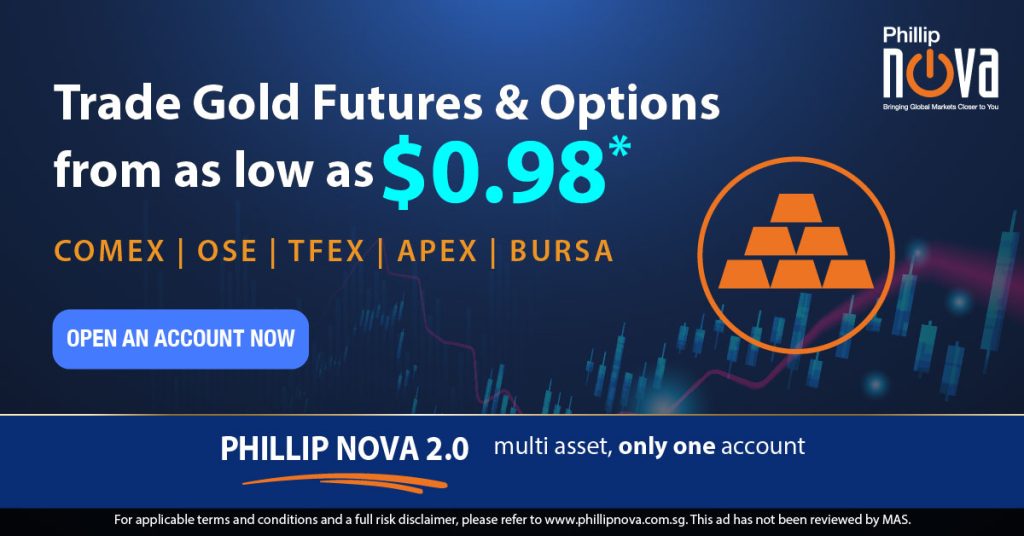By Priyanka Sachdeva, Senior Market Analyst for Phillip Nova

Gold, traditionally viewed as a safe haven during times of uncertainty, is currently caught in a confusing tug-of-war. Despite rising geopolitical tensions, renewed tariff threats, and expectations of major shifts in global monetary policy, the precious metal has struggled to break decisively above the US$3,500 mark—let alone approach the much-anticipated US$4,000 level.
Several key factors are pulling gold in opposite directions. Real yields remain elevated, the US dollar is strong, and the Federal Reserve shows little sign of easing interest rates – factors that typically weigh on gold prices. At the same time, ongoing trade tensions and hints of disinflation in the US provide some underlying support, preventing a sharper correction.
A recent spike in gold followed aggressive US trade rhetoric, but the rally fizzled as equities rebounded and the dollar regained strength. These short-lived surges suggest gold is sensitive to headlines but lacks sustained momentum without a broader risk-off shift.
Technically, gold has repeatedly failed to break through resistance near US$3,500, forming a triangle pattern that signals a potential breakout. However, recent price action suggests a bearish bias, especially if no major geopolitical shocks or dovish Fed shifts emerge. Fibonacci analysis also points to potential support around the US$3,150–3,200 range if the current downtrend continues.
Some investors are questioning whether this is a trend reversal or simply a pause before the next leg up. Given the fundamentals and technical setup, it’s more likely a consolidation phase – one that could precede a significant move, though timing remains uncertain.
The Federal Reserve’s policy path remains the key wildcard. While markets anticipate rate cuts in 2025, the lack of clear signals from the Fed continues to frustrate gold bulls. Until rate cuts begin, gold may remain under pressure. When they do, demand for non-yielding assets like gold is expected to rise.
Adding to the complexity, US trading partners such as the EU, China, and Japan have softened trade risks through more measured negotiations, reducing the kind of fear-driven demand gold typically benefits from. As investor focus shifts back to strong equities and if bond yields stabilize, gold could face more headwinds in the short term.
Bottom line: Gold’s current pause isn’t a sign of weakness, but rather a period of recalibration. While technicals suggest caution, the long-term bullish case remains intact – awaiting the right macro catalyst to reignite upward momentum.

Trade Gold Futures and Options on Phillip Nova 2.0 now
Or take a view via Gold mining stocks, Gold ETFs and Spot Gold now – Click here to open an account now!
Trade CFDs, ETFs, Forex, Futures, Options, Precious Metals, and Stocks with Phillip Nova 2.0
Features of trading on Phillip Nova 2.0
- Gain Access to Over 20 Global Exchanges
Capture opportunities from over 200 global futures from over 20 global exchanges
- Trade Opportunities in Global Stocks
Over 11,000 Stocks and ETFs across Singapore, US, China, Hong Kong, Malaysia and Japan markets.
- Charting Powered by TradingView
View live charts and gain access to over 100 technical indicators
- True Multi-Asset Trading
Trade CFDs, ETFs, Forex, Futures, Options, Precious Metals and Stocks on a single ledger on Phillip Nova 2.0







